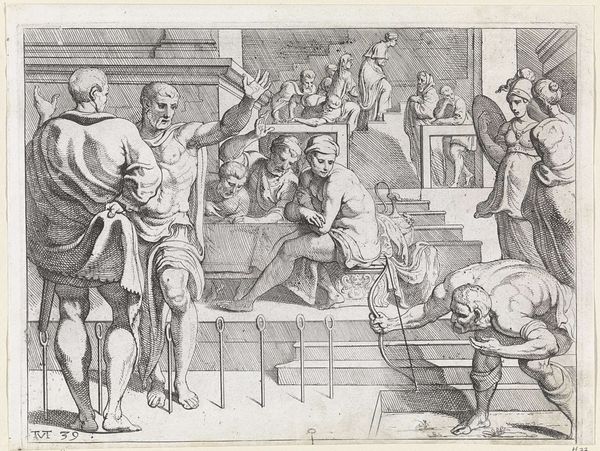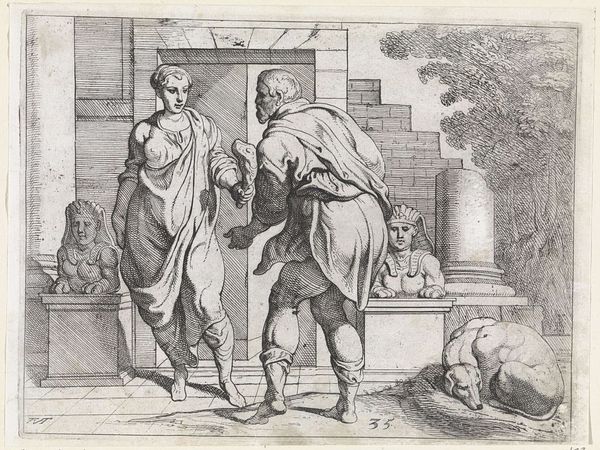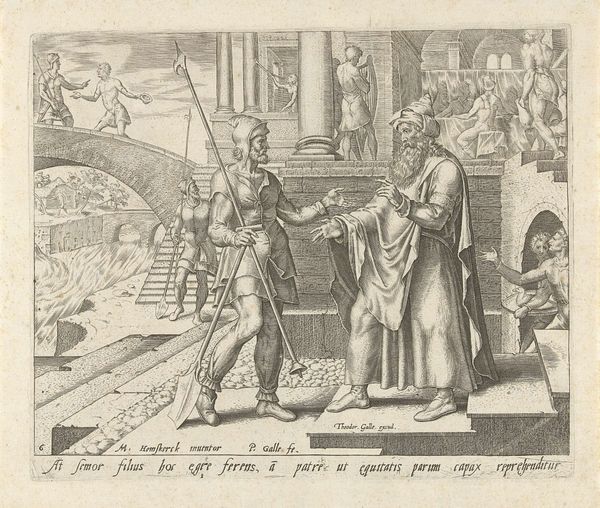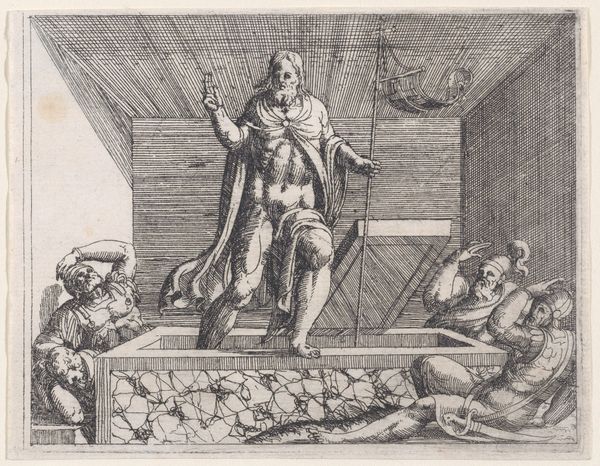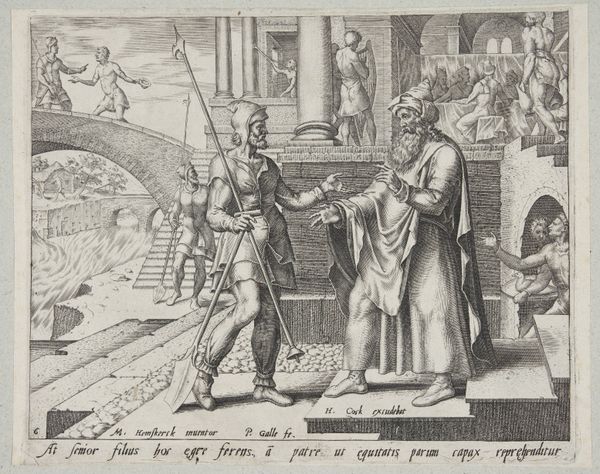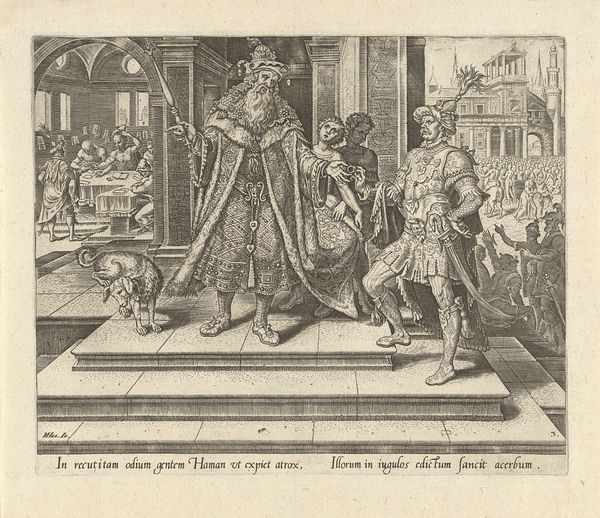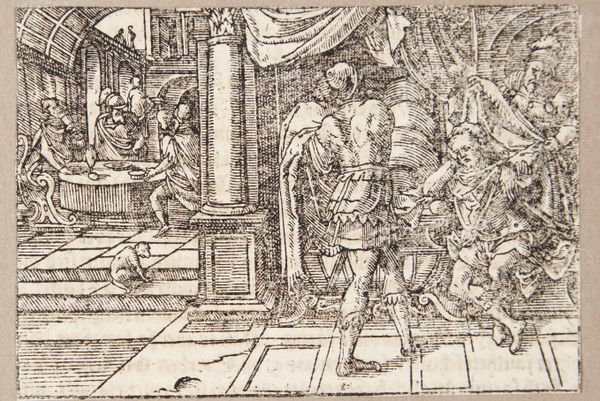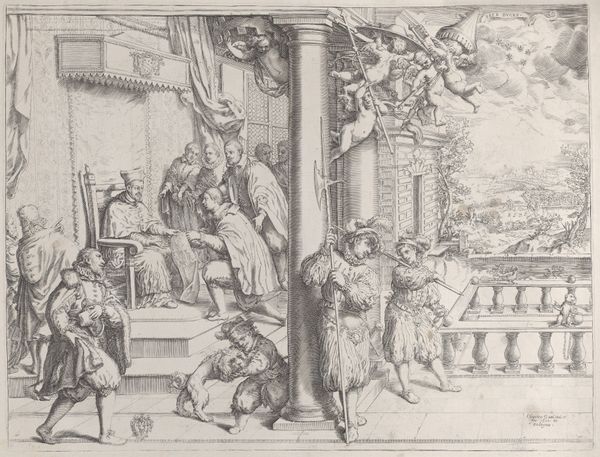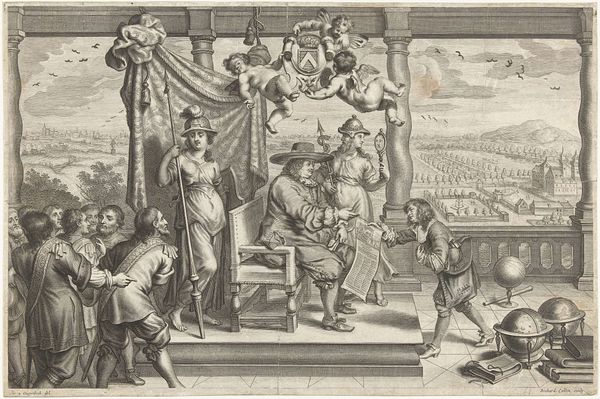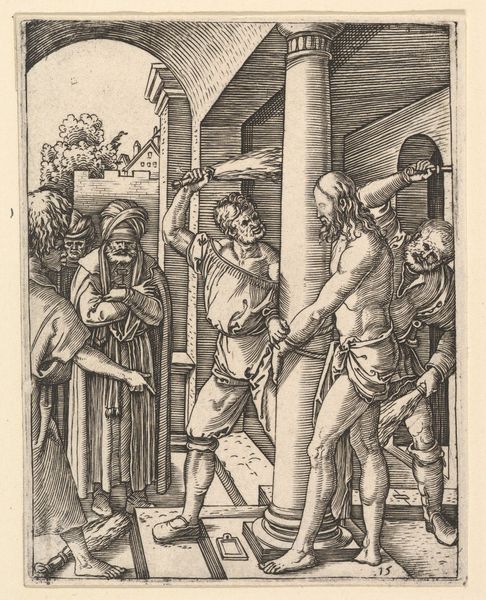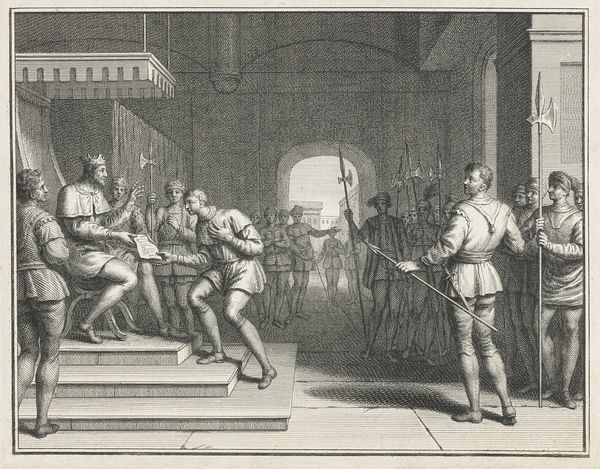
print, engraving
#
baroque
# print
#
pen sketch
#
landscape
#
figuration
#
history-painting
#
engraving
Dimensions: height 187 mm, width 246 mm
Copyright: Rijks Museum: Open Domain
Editor: We're looking at "Odysseus Embraces Laërtes in His Vineyard," an engraving by Theodoor van Thulden, dating back to 1632-1633. It's a surprisingly intimate scene rendered in fine lines. I’m curious about your interpretation. What compositional choices stand out to you? Curator: Initially, observe how the architecture meticulously frames the scene, structuring our gaze and guiding us into a multi-layered visual experience. The linear perspective creates a calculated depth. Notice how the lines and the balanced distribution of forms orchestrate our attention. Editor: Yes, the depth is striking for such a small work. It’s almost stage-like. Why do you think van Thulden made that choice? Curator: Precisely. He transforms the intimate scene into a theatrical exposition. Each element, meticulously placed, serves to accentuate not merely the narrative, but the very act of seeing. Ask yourself, how does the distribution of light and shadow reinforce the inherent tensions within the artwork? Editor: That’s a great question. I can see the light falls mainly on the figures, pushing the garden back. Is it about bringing forward their connection, isolating it from the rest? Curator: The strategic placement of light is less about mere illumination and more about defining the intrinsic relational aspects within the composition. It is a conscious emphasis that underscores the philosophical concerns prevalent during that era. Note how this play deepens our comprehension beyond just the historical context of Baroque art. Editor: So it is through light and form that van Thulden articulates more than the image itself? Curator: Indubitably. The structure itself provides meaning beyond the surface representation. It reflects a sophisticated engagement with form and semiotics that goes far beyond narrative alone. Editor: That’s helped me see how composition creates additional layers to consider beyond the historical subject. Thank you. Curator: A fruitful inquiry into the structural mechanics of art. Indeed.
Comments
No comments
Be the first to comment and join the conversation on the ultimate creative platform.
